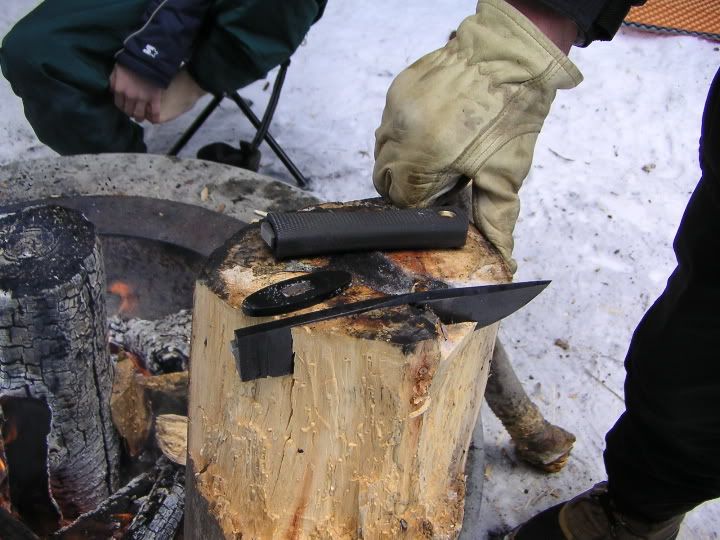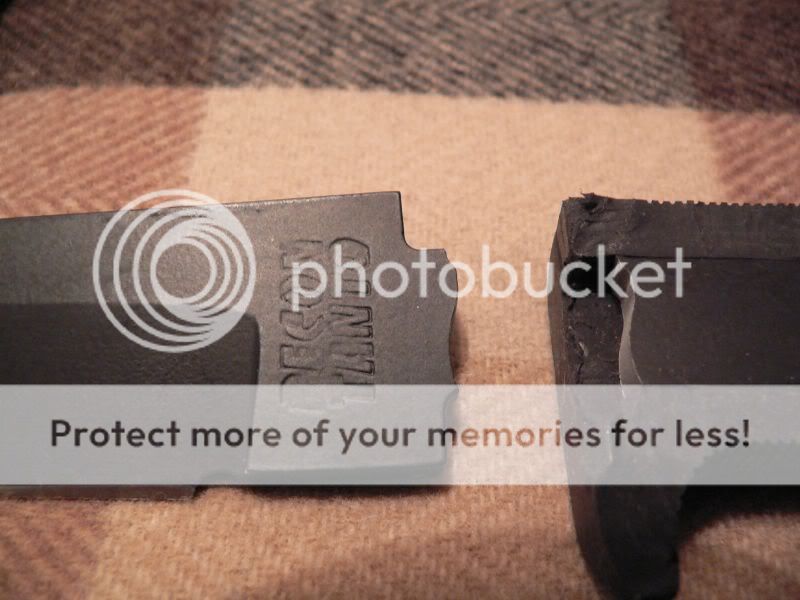(Ignoring the issue of how replacing a trigger would fix a shattered hammer..)
My Dad brought his Kabar home from WWII which we still used for odd chores right up through the 90s when he passed. The blade tip eventually snapped because he liked to throw it at a thick wood pillar in our house back in the 50s and 60s. [He was pretty good, about a 98% stick rate from varying basement distances. Still, however, eventually the blades tip cried uncle.] He just reground it down to a semi drop point and we continued to use the knife for other things. The other things included batoning the knife through deer pelvics and rib cages at least once or twice a year. There were no failures of the tang. However when we go to knifetests.com we see the Kabar there fails at the tang while batoning. I remain convinced such failures are something about the metal heat treatment that the particular blade received. The same is true of the CS knives. For every Carbon V that fails, there are 10 that haven't under similar use. There is also the issue of metal fatigue. How many times has this or that blade experienced this kind of stress? If I had batoned one more deer with the same Kabar that had done dozens, would the tang have bent or snapped? Yes, we all want a knife that will withstand such strains and stresses hundreds (or more) of times. However any knife makers ability to guarantee that is probably really slim. The more knives he or she turns out to meet production, as quality inspection and control diminishes to meet volume demands, the greater the odds of an occasional failure. I once saw the rear axle of a concrete truck snap with no warning while making a slow turn. [Kind of impressive really. A truck with at least 9 cubic yards of 'rete suddenly jumping a foot up in the air.] Hand examining the steel afterwards gave little clue. Two + inches thick and snapped clean. Thousands of miles on the truck and many, many slow turns at different sites. We can never tell when or if. All a knife maker can do is try to adjust the odds, eliminate micro fissures when forging, proper heat treatment, etc. Even then, no guarantees.




